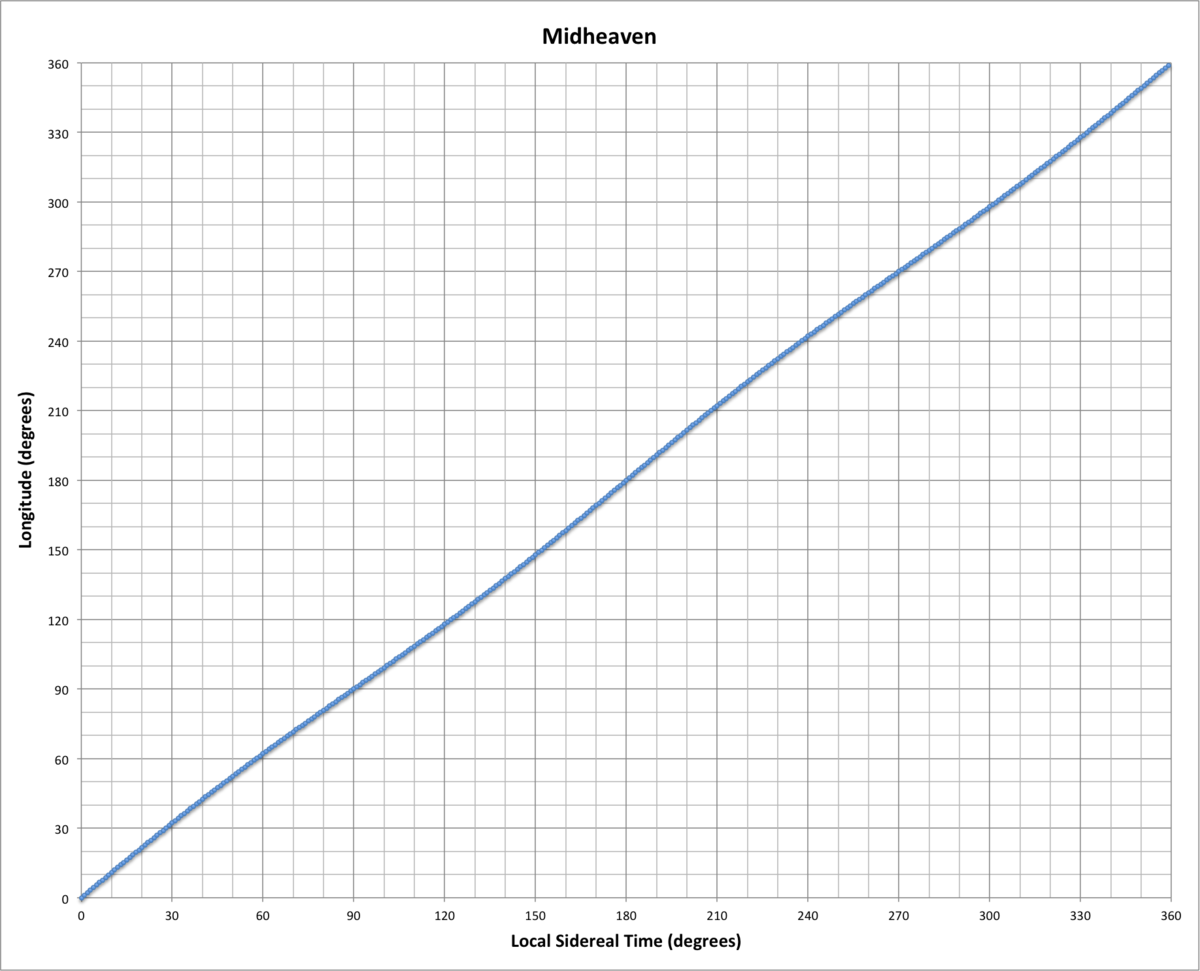 | ||
The midheaven (MC) is a point of definition in the ecliptic coordinate system. It aims to find the part of the ecliptic that corresponds to the highest point in a celestial object's apparent daily traverse of the visible sky, midway between its ascension on the eastern horizon and descension on the western horizon. The midheaven does not represent the point immediately overhead (our local zenith) or even the point of the ecliptic closest to it, but the point at which the local meridian intersects with the ecliptic.
Contents
In the northern hemisphere, the more northerly the latitude of the observer, the lower down on the horizon the midheaven point is likely to be, but it will always be the part of the zodiac that is due south at any time, indicating the point where the planets reach their highest declination in their arc between the ascendant and descendant. The reverse is true in the southern hemisphere where the planets culminate on the midheaven in alignment with due north.
Calculation
where
Use in astrology
The Midheaven (MC or Medium Coeli, literally 'middle of the sky') is one of the most important angles in the birth chart. It traditionally indicates career, status, aim in life, aspirations, public reputation, and our life goal.
In the Alcabitius, Placidus, Koch, Campanus, Regiomontanus, Meridian and Krusinski house system, the local meridian passing through Midheaven forms the cusp of the 10th house. In the equal house system Midheaven can be found in the 8th, 9th, 10th or 11th house. The other end of this axis, 'beneath' the earth, is the point known as the IC or Imum Coeli ('lower midheaven', literally 'bottom of the sky').
Whilst the Midheaven is traditionally thought of as indicating a goal in terms of career or working life, it is not confined to this type of goal, and can indicate very personal or spiritual goals as well.
The individual will identify with and admire the qualities of the astrological sign on the Midheaven. The sign on the cusp of the Midheaven quite often indicates what kind of career, vocation, or reputation in life the native will pursue. It also reflects how an individual reacts to stressful situations.
The Midheaven quite often refers to a parent, quite often the mother, but sometimes the father. The other parent is sometimes represented by the angle at the opposite end, the Imum Coeli, or IC.
Combinations of Ascendant and Midheaven signs
The Midheaven is always aligned with north or south. However, the Ascendant and Descendant are not necessarily aligned with east and west, so the Ascendant is not necessarily at 90 degrees to the Midheaven. The Ascendant is the degree of the ecliptic that intersects the eastern celestial horizon at a specific time and location. For observers in the tropics, this will always be close to due east and the Ascendant will always be close to 90 degrees away from the Midheaven. As the observer moves farther north or south it becomes possible for the Ascendant to be farther and farther away from due east.
Because of the obliquity of the Earth's axis relative to the ecliptic, away from the equator some signs take much longer to cross the eastern horizon than do others. In the northern hemisphere, the signs from Cancer through Sagittarius take longer to ascend than the signs from Capricorn through Gemini, whilst in the southern hemisphere the reverse is the case.
However, the Midheaven sign for a given sidereal time will remain the same regardless of the latitude of the location for which the chart is cast. This means that, for different latitudes, a different sign can be ascending for the same Midheaven sign. For equatorial latitudes, the sign on the Midheaven will generally be three signs before the sign on the Ascendant, but at very high latitudes this can vary between one sign before and five signs before the sign on the Ascendant. The greatest separations between Ascendant and Midheaven occur when short ascension signs (Aquarius, Pisces, Aries) are on the Midheaven, and the smallest when long ascension signs (Virgo, Libra, Scorpio) are on the Midheaven.
